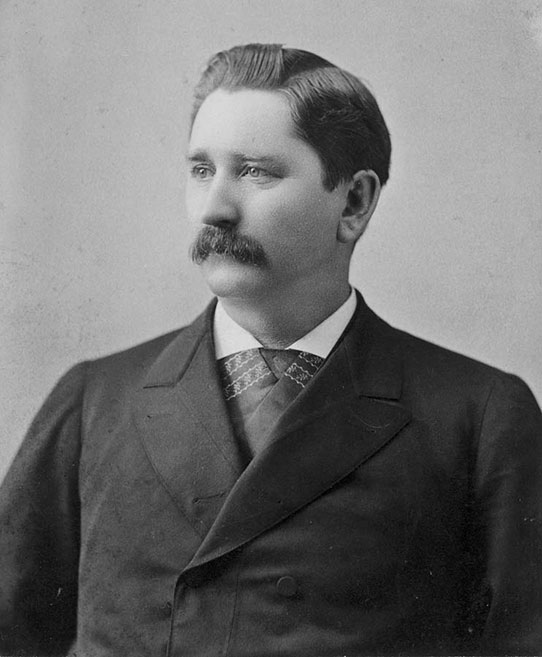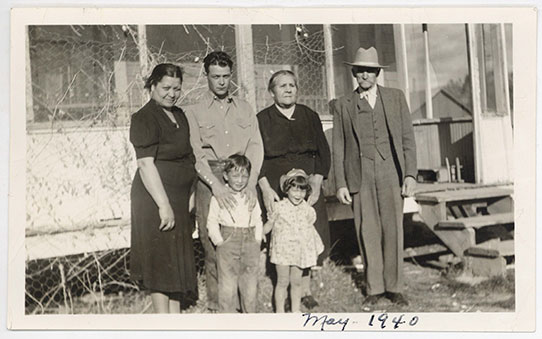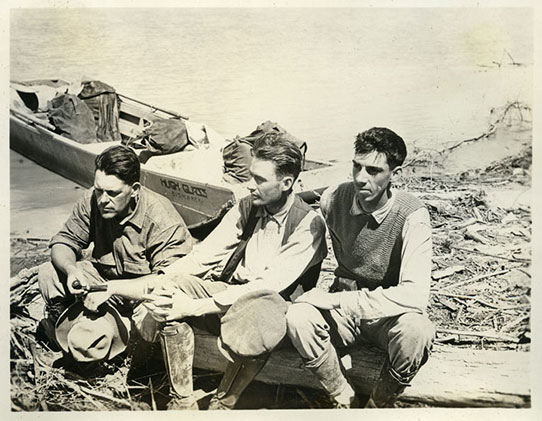I've often compared the process of working with incoming manuscript collections to the experience of receiving gifts at Christmas. Each package that arrives is like a gift: some donations are anticipated, others arrive without warning; some donations are more unique than others; but they all were created, maintained, and given with care and an understanding of their current and future importance.
There have been several notable "surprises" donated since I started working for the State Archives. In October 2011, a box arrived from a donor in New York that contained correspondence between the notorious "Political Boss" Alexander McKenzie and his "secret" second wife, Elva. Despite having such a big impact on North Dakota politics, there are very few existing records that document McKenzie's personality and business activities. These original letters are especially important since secondary sources surrounding Alexander’s life, such as newspaper accounts, biographies, census records, and even legal documents often have discrepancies. The finding aid to this collection can be found here: http://history.nd.gov/archives/manuscripts/inventory/11100.html.

Portrait of Alexander McKenzie by D.F. Barry, ca. 1880s (A2279)
Another "surprise" collection, the papers of Lakota historian Josephine McCarthy Waggoner (1871-1943), was donated last fall. It includes stories of Lakota and Dakota tribal members and their cultural traditions, many of which were told to Waggoner firsthand, as well as Waggoner's own life experiences. Waggoner worked with several individuals to publish her manuscripts, and in the process, many of her writings were lost. Her descendants struggled for decades to reclaim her work, and many remnants remain scattered across institutions or in private hands. In light of this struggle, the already historically significant collection is even more important. The stories were fascinating to read as I processed the collection, which is unique among the North Dakota State Archives' manuscripts collections. The finding aid is located here: http://history.nd.gov/archives/manuscripts/inventory/11236.html. (Emily Levine recently edited and published Waggoner's manuscripts in the book Witness).

Josephine Waggoner (second from right, standing) with husband Frank, Ramona Skogen, Carl, Joan and Alfred Braine, May 1940 (Series 30203, Box 26, Folder 6)
Revisiting existing collections in the Archives can elicit some of the same feelings of surprise and excitement as new donations bring. The Will Family papers (Oscar H. Will, George F. Will Sr. and many others) resided at the SHSND since the 1940s, and processing was completed this year (although major additions were made to the collection up to 2009). The papers are a major resource for information about the pioneering seed company, as well as North Dakota archaeology, dendrology (the study of trees), ethnobotany, the Mandan, Hidatsa and Arikara people, and the history of Bismarck (ND).

Left to right: George F. Will, Clell G. Gannon and Russell Reid during a trip down the Little Missouri River, June 19, 1925 (10190-00640)
On occasion, we receive notice that a collection will be donated and are aware of its significance from the beginning, but still are surprised about what we find as we work with the collection. Former North Dakota Archivist Frank Vyzralek's papers were donated this past year, and are currently being processed. Vyzralek's lifetime of research covers what seems like every possible topic related to North Dakota history, including: railroads, steamboats, mills and elevators, banks, fires, brewing, crime, politics, businesses, transportation, historic properties, and much, much more. Every day, I look forward to organizing this collection and the other gifts that are donated to the archives, and making them accessible to the people of North Dakota.

